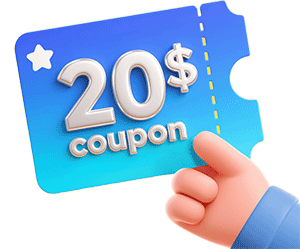What is Personalization?
Personalization refers to the process of tailoring content, experiences, or services to meet the individual preferences, behaviors, and characteristics of a user.
It leverages data such as browsing history, location, or past interactions to deliver more relevant and engaging experiences. This approach is widely used across digital platforms to improve user satisfaction and drive meaningful engagement by addressing users' specific needs or interests.
What is eCommerce Personalization?
eCommerce personalization is the practice of delivering individualized shopping experiences based on a user's behavior, demographics, and purchase history.
It includes personalized product recommendations, dynamic content, customized offers, and targeted messaging.
The goal is to increase conversion rates and customer retention by making the shopping journey more relevant and efficient for each user.
Advantages of Personalization in eCommerce
- Enhanced Engagement: Personalization encourages shoppers to explore more pages and spend longer browsing the site.
- Higher Conversion: Tailored product suggestions help guide customers toward making a purchase more effectively.
- Seamless Experience: Reducing obstacles in the buying process creates a smoother journey for users.
- Increased Loyalty: Customized interactions foster stronger connections, encouraging repeat visits and purchases.
- Boosted Sales Opportunities: Personalized offers and recommendations support smarter cross-selling and upselling.
- Informed Decisions: Leveraging user data allows brands to refine marketing strategies and optimize campaigns continuously.
Types of Marketing Personalization
Behavioral Personalization
This method uses real-time data, such as browsing activity and past purchases, to tailor product suggestions and on-site messaging. It helps brands respond to current user intent and deliver timely offers.
Demographic-Based Personalization
By segmenting users according to age, gender, income, or location, businesses can adjust messaging, visuals, and promotions to align with specific audience expectations and needs.
Email Personalization
Tailoring email content based on user behavior—such as abandoned carts or previous interactions—can lead to higher open and click-through rates. Personalized subject lines and product blocks are commonly used techniques.
Predictive Personalization
Powered by machine learning, this approach anticipates future behavior based on historical data. It enables brands to proactively recommend products or content before users explicitly express interest.
What Are Some Challenges of Marketing Personalization?
- Data Collection: Collecting accurate and privacy-compliant user data remains a major hurdle.
- Relevance Balance: Balancing relevance with the risk of over-personalization can be difficult.
- Tool Integration: Integrating personalization tools seamlessly across multiple platforms poses technical challenges.
- Scalability: Managing personalization effectively at scale requires robust systems and processes.
- Content Diversity: Ensuring enough content variety to appeal to different customer segments is essential.
- ROI Measurement: Measuring the direct return on investment from personalization efforts is often complex.
How to Build an Effective Personalization Strategy
1. Define Clear Objectives
A successful strategy starts with measurable goals—whether to increase sales, reduce bounce rates, or boost user retention. Objectives guide personalization tactics and performance evaluation.
2. Segment Your Audience
Identify key customer groups based on shared traits or behaviors. Use this segmentation to deliver targeted experiences that resonate with each group's needs and preferences.
3. Choose the Right Tools
Select technologies that support real-time data processing, omnichannel delivery, and integration with your existing systems. Compatibility with CRM, email marketing, and analytics platforms is essential.
4. Test and Optimize
A/B testing, performance tracking, and user feedback help refine personalization efforts over time. Continuous iteration ensures strategies remain effective as customer expectations evolve.
Personalization vs. Customization
Personalization relies on automated systems that analyze user data and behavior to deliver tailored content or experiences without direct involvement from the user.
It functions proactively, predicting what users might want based on patterns and insights.
Customization depends on the user actively making choices—selecting preferences or adjusting settings to shape their own experience.
While both approaches focus on enhancing relevance, personalization excels in automation and broad application, whereas customization emphasizes user empowerment and precise control.


























